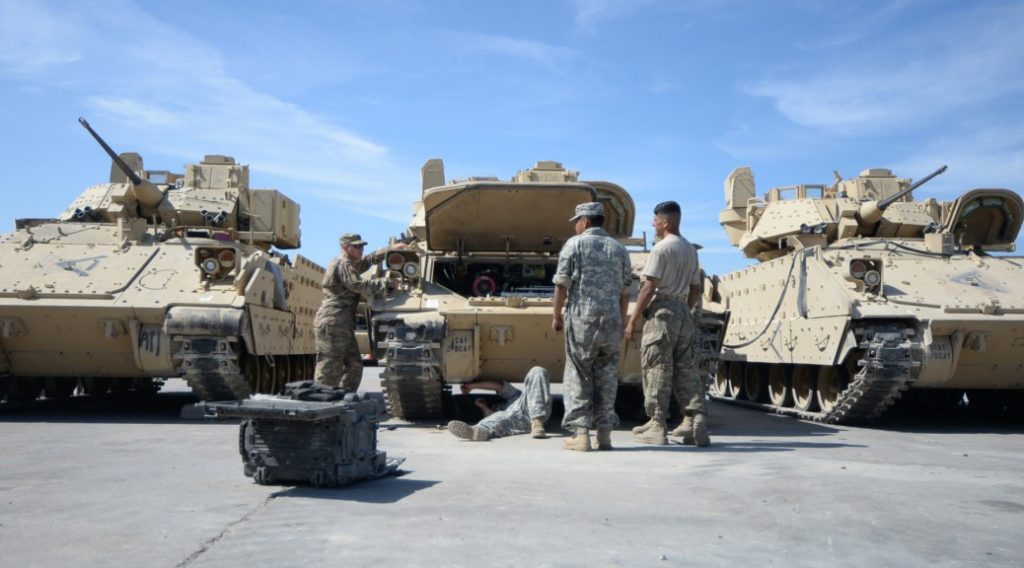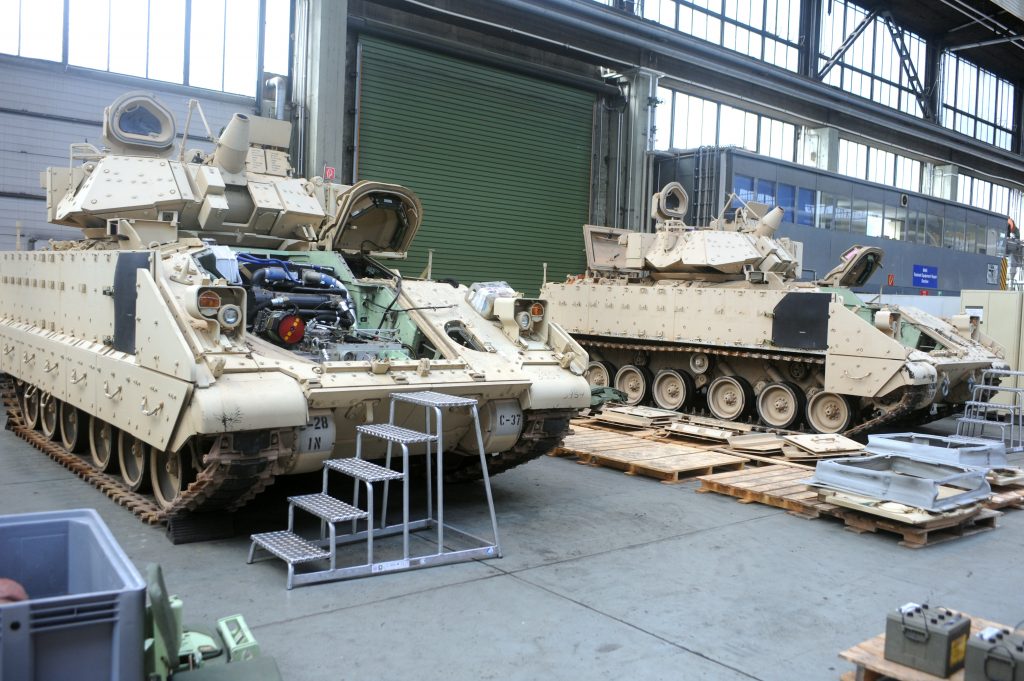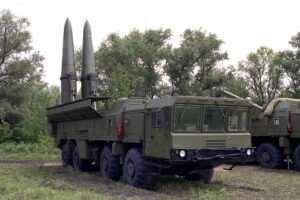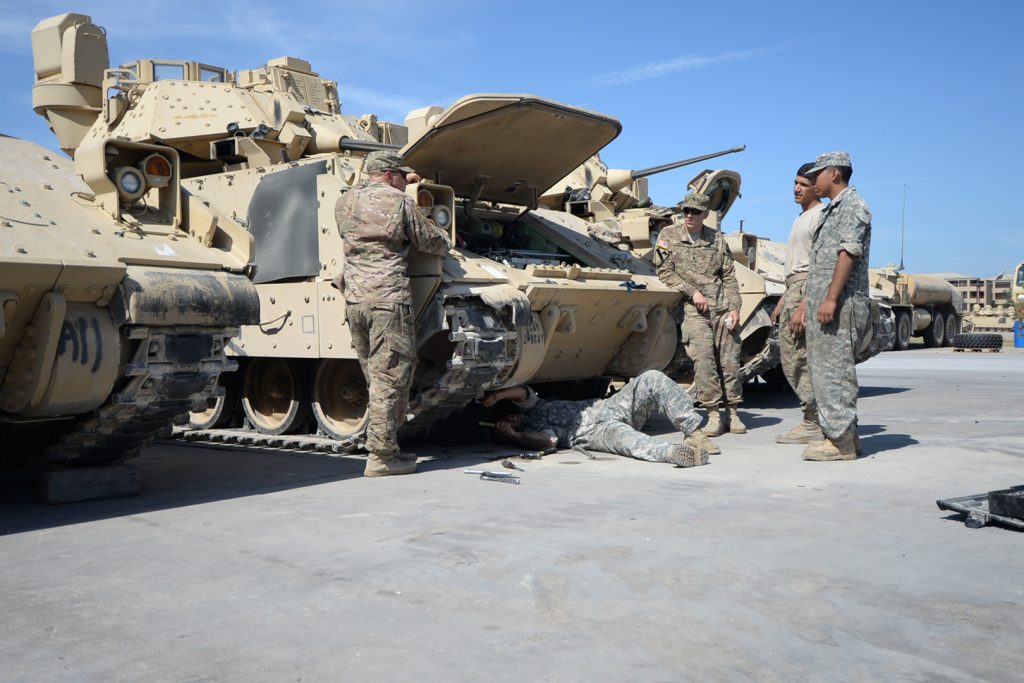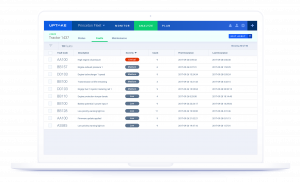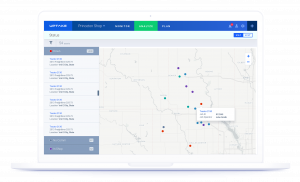AI Logistics Let Combat Units Move Faster: Uptake’s DIUX Contract
Posted on
WASHINGTON: A new contract to apply artificial intelligence to Army maintenance could streamline logistics and help untether fighting forces from long supply lines. Ultimately, AI could enable the far-ranging maneuvers envisioned by the multi-domain operations concept for fighting Russia and China.
Most debate about military artificial intelligence centers on killer robots, but professionals usually talk logistics. Without fuel, ammunition, spare parts, and maintenance, no weapon, manned or unmanned, is going anywhere or killing anyone.
What’s more, while AI has made great progress in recognizing objects (i.e. targets) and navigating the physical world (e.g. self-driving cars), it’s still inferior to humans, which means autonomous combat robots are far in the future. By contrast, computers have always been better than humans at doing lots of math on lots of data, and logistics is a numbers game.
Brokered through the Pentagon’s outreach office in Silicon Valley, DIUX (Defense Innovation Unit, Experimental), the initial contract announced yesterday just covers 30 vehicles over a 14-month trial period for one million dollars, awarded to a four-year-old firm called Uptake. (The Army can extend the test or order production if fully satisfied). The Chicago-based company has already worked with private corporations like Caterpillar (tractors), Progress Rail (locomotives), Berkshire Hathaway (wind power turbines) and the Palo Verde nuclear reactor complex in Arizona.
Now Uptake will apply AI-driven “predictive maintenance” to part of the Army’s aging fleet of M2 Bradleys, tank-like troop carriers. While tractors and locomotives don’t have anti-tank missile launchers or chainguns, they do have diesel engines, heavy-duty transmissions, and other features in common with the Bradleys.Uptake boasts it has 230 million hours of data on diesel engines alone, and in the world of AI machine learning, the more data you have, the more accurate your algorithms get. The goal is to track the performance of each major component in real time — oil pressure, turbocharger speed, battery life, etc. etc. — and predict when it’s likely to fail.
Predictive maintenance has two benefits. First, most obviously, it lets you replace or repair a part before it breaks on you, which in the middle of combat could be not only inconvenient but fatal. Second, more subtly, it lets you skip a lot of so-called preventive maintenance, when you pull your vehicle into the shop after so many hours of operation because that’s when, on average, such-and-such a component will need an overhaul. (Changing your oil every 3,000 miles is the most familiar example for civilians, but military machinery is much more complex). All told, you get more time that the machinery is working for less time in maintenance: At the Palo Verde reactors, for example,Uptake’s AI allowed a 37 percent reduction in annual preventive and corrective maintenance.
Professionals Talk Logistics
There’s been a small blitz of media coverage of the contract, from the Army Times to The Washington Post, but it’s focused on how predictive maintenance can improve efficiency and cut costs. That’s true, but it neglects uniquely military benefits.
Logistics has been a double-edged sword for the US Army for generations. On the upside, lavish supplies of fuel, ammunition, and spare parts have kept huge armored forces on the march in every war since 1941. On the downside, the long supply lines, iron mountains of supply stockpiles, and the huge numbers of support troops and vehicles required slow down the Army’s deployments to a crisis and restrict its maneuvers once it’s arrived.
The Army could cope with these logistical limits in two conventional wars against Iraq, where it had months to build up before the shooting started, friendly countries nearby as bases, and a relatively short distance to drive. Kuwait City to Baghdad is just over 400 miles, only six and a half hours in decent traffic, according to Google Maps. (Obviously making the same distance against heavily armed opposition takes longer). In the 15 years of counterinsurgency that followed, the US built up an extensive infrastructure of bases in Iraq and Afghanistan.
But if Russia invaded NATO allies in Eastern Europe, the logistical demands would be much greater. First, the distances are longer. From Vilseck, Germany — base of the last US Army brigade stationed north of the Alps — to Kaliningrad, Russia — Putin’s well-armed westernmost bastion — is almost 700 miles, a 12 hour drive. This is the theater of war where Hitler’s panzers literally ran out of gas and spare parts, after all.
Second, Russian firepower is greater. With drones and radio direction-finding to spot targets, Russian missile barrages have proved devastatingly accurate in Ukraine. Large combat formations moving along a single axis of advance would be highly vulnerable, let alone supply convoys and depots.
So emerging concepts called multi-domain operations or distributed operations envisions US ground forces spreading out to make themselves harder targets. Relatively small units would operate “semi-independently,” moving frequently from one hiding position to another, without resupply for days at a time.
The problem is the US Army cannot do this today. Heavy armored vehicles like the Bradley, the M109A7 Paladin howitzer (which shares the Bradley’s engine and transmission), and, above all, the M1 Abrams main battle tank just require too much fuel and maintenance to operate this way. The long-term solution is to develop lighter and less logistically demanding vehicles, but the Army has been trying and failing to do that since the Future Combat Systems program (launched 2003, cancelled 2009).
In the meantime, the Army needs to figure out how to support the forces it has more efficiently so they can maneuver more freely, with less frequent pit stops for maintenance or supply runs for repair parts. That’s whereUptake’s AI comes in.
Beyond The Owner’s Manual
“A lot of maintenance that’s done is based on what the owner’s manual says,”
Uptake spokesman Matt Lehner told me. “‘You should go and get your oil changed and your engine checked every so many thousand miles’… which is not a bad baseline, (but) it doesn’t take into account how the machine is being used and the wear and tear and stresses.”Uptake’s software, by contrast, tracks not only the individual performance of specific components on specific vehicles, but also external variables like weather. (Heat, cold, and humidity can all impose stress on machinery).
Where’s this data coming from? It turns out industry’s ability to put digital sensors on its products got ahead of its ability to do anything with it. “A lot of machines have the sensors already on them that are producing data, it’s just that nobody’s listening,” Lehner told me. Specifically for the Army, “there are already sensors and instrumentation on the Bradley that we’re able to tap into, so we don’t need to add any.”
That data flows from the individual vehicles to Uptake’s computers over a wireless network. Cybersecurity is a top priority, Lehner assured me. If a vehicle is in a location with poor bandwidth, or if there’s a military reason to turn off all transmissions (listening Russian electronic warfare units, for example), the system can stop sending updates for a time. It can also do some of the analysis onboard the vehicle and only send the results back to the central computer — a technique called “edge computing” — which minimizes bandwidth use and transmission length.
But the big benefit is the ability to do big data: Pool all available information in one place and then let loose machine learning algorithms to figure out patterns, which can then be used to forecast future performance.Uptake has collected over 1.2 billion hours so far across all its operations, although not all of that is relevant to the Army. Such huge amounts of information would overwhelm human analysts, but the more data an artificial intelligence has to train itself on, the better its predictive algorithms become.
Uptake’s software can track general trends across a fleet of vehicles, Lehner said, but the real value is retail-level prediction. Imagine if, instead of having to go to the doctor for your annual physical, you had a personal physician watching your vital signs 24-7: This is the equivalent for machines.
“On the individual machine/equipment level, will that locomotive, Bradley, wind turbine make it through the day and do what it needs to do?” he said. The goal, he went on, is that “the tactical commander knows ‘I have this many Bradleys, this is what the overall health is for each individual Bradley…so I can make a better strategic decisions.”
Updated 9:50 am Thursday with contract details.
Subscribe to our newsletter
Promotions, new products and sales. Directly to your inbox.

